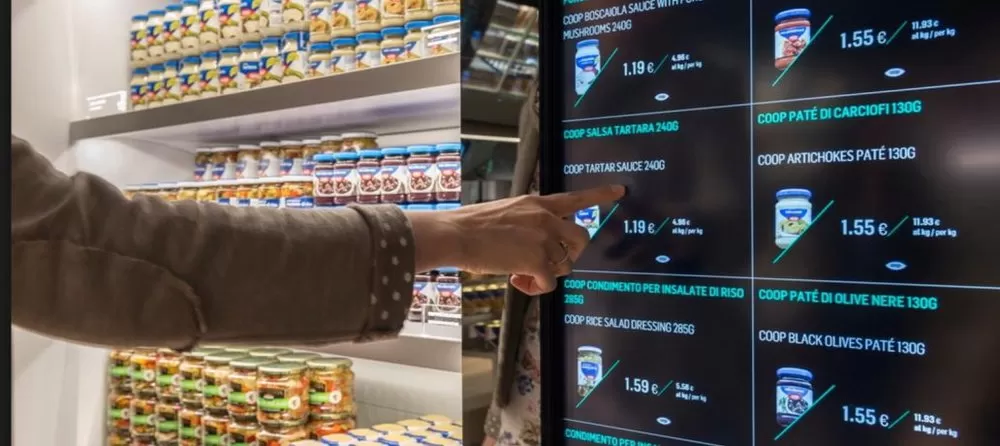The future of grocery is here but it’s not evenly distributed. The future of grocery will be impacted by innovation in technology and other ways to make shopping more of an experience, whether that’s in-person or digital.
Post COVID the stakes are higher in the race to be more efficient by Whole Food (Amazon), Walmart and Target. These three (US) companies have a race to be faster in online ordering, curbside pick-up, better customer service and more value to the customer.
But many people, such as busy working parents, even given all the delivery options available, still prefer to go to a store – as online ordering often still has many unresolved flaws. Grievances with grocery stores today have much to do with simply the ease of shopping and the ability for grocers to pivot quickly which they struggle to do. Being able to find a delivery window for any supermarket online was similar to Unicorn spotting.
Trader Joe’s has wonderful products, but no delivery or digital option – making customers wait in lines for over an hour to get groceries. Today grocery stores are still struggling post outbreak as employees test positive themselves. In California, the grocery laws have become understandably stricter including the ban on reusable bags. But this led to grocers like Safeway handing out hundreds of thousands of plastic bags, and often no alternative like paper – for many this is a mood killer, due to a universal loathing of plastic bags.
Before We Talk Technology, We Must Talk Operational efficiency
Grocery is a tough business as profit margins can be low, but we can learn from Trader Joe’s operational efficiency to create better profit margins, such as not storing large amounts of food in the back, and simply taking all fresh food off the truck and putting it directly on the shelves. This is almost unheard of in the grocery industry.

What is the point of all of this? The point is grocers can’t easily accommodate large shifts in customer preference today let alone provide an experience people want.
Making Food Buying An Experience
Many products are the same and have become commodities. The way that customers differentiate between brands is by their experiences, and that’s especially true in the grocery industry. The grocery store of the future will be much more focused on experience than just things.
Customers won’t choose the store because of the products; they’ll choose it because it offers a convenient or beneficial experience. It will be a place where customers come to learn about their food and experience it in new ways instead of just buying it. That means stores will offer things like cooking classes, wine tastings and restaurants. There are many mistakes wine companies make in ecommerce.
Many customers are now moving to grocery’s pickup and delivery, which is sure to continue and grow for customers of the future. Delivery could change everything about grocery, including opening the door to stores stocking food off-site.
Restaurants are switching to ghost kitchens for pick-up and delivery without eat-in dining rooms, and the same could happen to grocery stores that act as pick-up and delivery hubs but don’t let customers inside. In the future, 30-minute delivery times will become commonplace, with groceries even possibly being delivery by drone.
One of the biggest pitfalls of current online grocery ordering is that orders are often wrong or have unsustainable packaging. Grocery stores will need to improve these issues in the future with innovative solutions, such as allowing customers to simply click on a recipe and have all of the items delivered from the store.
The most important feature for grocery stores of the future is an experience or point of view. Why do customers want to step inside your store? What makes them feel special when they shop? How can the store offer an experience that teaches and enriches customers?
The experience should make customers’ lives easier and better, such as teaching them about the food they are buying or giving them a chance to relax while the shopping is done for them.
Artificial Intelligence Will Be Indispensable For Tomorrow’s Grocery Businesses
AI is the cornerstone of the future of customer experience. Brands need to leverage AI to become more efficient and hyper-personalised. Many aspects of the customer experience, like answering routine questions or even checking out in-store, can be automated with AI, which leaves human employees more time to interact with customers in meaningful ways.
In the future, there will be more apps, robots and other technology we haven’t even created yet. The key is for companies to find a balance between technology and human interaction—customers enjoy the convenience of using a chatbot or an app for information, but they also crave real human connection, such as talking to a representative about a more complicated problem or getting personalized product recommendations from a stylist.
For Younger People (Generation Z/Y) A good shopping experience is more important than it is for their parents
Technology has changed how people shop and interact with brands. Younger people are digital natives who grew up with technology like smartphones and the internet. They are used to having personalized interactions every day with brands like Spotify and Netflix and expect to get that same treatment of seamless, personalized transactions from all brands.
Younger customers like to stay connected and rely on connections with their friends and brands to make purchase decisions. Younger generations care much more about the experience than the product or the price. They’re more likely to spend money on a great experience because they care more about memories than things.

The Best Grocery Stores Still Need Work: Here’s How
Trader Joe’s is beloved by customers, and for good reason. The store prioritizes its employees by providing great benefits and a pleasant work environment, which makes employees more likely to deliver a great experience to customers. Employees are cheerful and helpful and will recommend products and even open them to give customers a sample before they buy.
There’s free coffee and sample foods to eat as you browse. Trader Joe’s also limits the number of each type of item on the shelf, so instead of 30 options of spaghetti, customers only have a few choices, which makes for a simpler shopping experience.
Trader Joe’s doesn’t take itself too seriously with funny product names and unique decorations to reflect each store’s neighborhood. With friendly service, a focus on experience and a store with personality, Trader Joe’s turns grocery shopping into an enjoyable and memorable experience.
However, even Trader Joe’s, which prides itself on experience, needs to figure out a way to deliver to customers. With COVID, they were behind the times with delivery, and that provided a painful experience to customers who had to wait in long lines to get their beloved TJ products. The future is a mix of in-store and virtual, and Trader Joe’s will need to come up with a plan for a future that gives customers more options for how to get their groceries.




